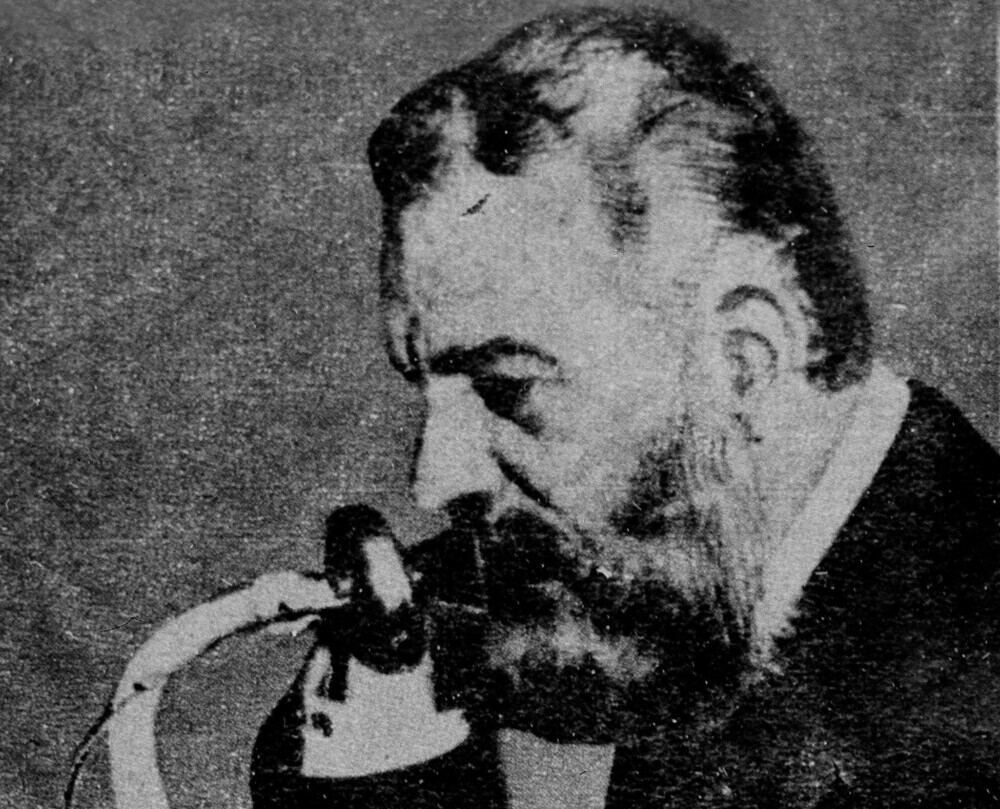The following is part one of a three-part explainer series on Canada’s telecommunications sector. In part two, we’ll look abroad to see how Canadians’ options compare to those in other countries.
Canada’s telecommunications policy has changed a lot over the years but one thing has remained constant: the industry has long been subjected to legislative restrictions on foreign ownership. The rules were loosened for small players in 2012 but they’ve persisted for the “Big Three” domestic players—Telus, Rogers, and Bell.
The Telecommunications Act of 1993 is the proximate cause, but the barriers have deeper origins that can essentially be summed up as “history, philosophy, and geography.”
A history of regulation and consolidation
Today, the Big Three’s core activities include cable television, TV broadcasting and streaming, internet service, cellular phone service, and landline telephones. But only the last of these existed back in the horse-and-buggy days when the federal government first staked out its role as the arbiter of the industry’s rules. In order to understand the origins of the Canadian practice of strictly regulating telecommunications one must look back into the tangled history of phone service in this country.
In 1880, telephones were a newfangled contraption invented just four years prior. Eager to consolidate and encourage the fledgling industry to spread across a rapidly settling frontier, federal legislators passed a bill that year to give the Bell Telephone Company of Canada special privileges, including the right to construct telephone lines along public rights-of-way.
(The majority of MPs who voted in favour of enshrining Bell as a quasi-monopoly either didn’t know or didn’t care that majority control of Canada’s Bell had recently and quietly been acquired by the U.S.-based National Bell. Both companies had been founded by Scottish-Canadian telephone inventor Alexander Graham Bell and his father, Alexander Melville Bell.)
Bell’s status as an unofficial and defacto monopoly shaped the company’s destiny as well as Canada’s telecommunications industry in the 20th century. The company had regional rivals that offered local telephone service—everything from co-operatives and Crown corporations to subsidiaries of U.S. telephone companies. In the twilight of landline dominance in the 1990s, Bell Canada’s customers were concentrated in Ontario, Quebec, and the Northwest Territories. Meanwhile, Rogers became a cellphone provider by acquiring Cantel in 1986; Telus emerged in the 1990s through the privatization of Alberta Government Telephones, and its subsequent acquisition of BC Tel.
But overall, Bell thrived and dominated the market throughout the 20th century and was often referred to as a “natural monopoly.” It even called itself one—for example, in a 1978 Canadian Radio-television and Telecommunications Commission (CRTC) hearing looking into whether Bell should be obliged to allow competitors to connect with its network of microwave relay towers. Ted Woodhead, former chief regulatory officer and government affairs head at Rogers, says federal governments across the 20th century actually encouraged Bell to swallow up smaller companies to keep the telephone industry simple and tidy to deal with—sometimes literally.
For Canadians living in cities, he suggests searching online for streetscape photos circa 1910 to see why.
“You’ll see telephone lines, like a mesh of them going above the street. And it was because originally there could be as many as 100 individual separate local phone companies,” Woodhead says.
“And so 100 different physical lines would go everywhere. At some point, governments got tired of that [all those separate wires] and basically encouraged Bell, and Bell bought them all out. Bell was still buying them out in smaller places up into the late ’90s.”
In the mid-1970s, AT&T, which had evolved from the U.S.-based National Bell, sold its Bell Canada shares, making it possible to call itself a truly Canadian company. The federal government started the slow process of telecom deregulation that same decade, which encouraged competition (primarily domestic). But old habits die hard. In 1985, the CRTC declined to open up the long-distance market to competition. The commission relented in 1992.
Telephone service subscribers weren’t even allowed to purchase their own phones from their supplier of choice until the rule changed in 1982 (thus ensuring Canadians could take part in the novelty telephone craze of the 1980s—hello, hamburger phone!).
Technological nationalism as a guiding philosophy
Technological nationalism was a sort of consensus in late-20th-century Canada. Mainstream politicians subscribed to what Canadian economist Robert E. Babe called, in his 1990 book Telecommunications in Canada, the “prevalent myth” of technological nationalism: the belief that sovereignty depended in part on retaining domestic ownership of strategic sectors like telecommunications and air travel.
Against the backdrop of the free trade debate, even the party pushing for closer economic union with the United States was fearful of foreign (read: American) domination of a lucrative industry. By 1987, the Mulroney government had adopted a policy to make domestic Canadian control of the telecommunications sector official and permanent. It’s notable that the incoming Chrétien Liberals passed the Telecommunications Act in 1993, enshrining the prohibition against foreign investment.
The Telecommunications Act governs telephone and internet services and affirms the CRTC’s power to regulate the sector. (The telcos’ broadcasting activities are separately covered under the Broadcasting Act, and other activities are moderated by separate legislation.) But the law also gives the CRTC a “forbearance power,” which means it can decline to intervene when and where market competition is sufficient to protect consumers.
As for the law’s foreign ownership restriction, it states that a telephone provider with at least 10 percent market share must be Canadian-owned.

October 18,1898 Communications – Telephone. Alexander Graham Bell opening the New York – Chicago long distance line. CP PHOTO 1999/National Archives of Canada, C-014483.
According to the Telecommunications Act, that means at least 80 percent of the board members must be Canadian, and 80 percent of the voting shares must be Canadian-controlled.
The rule has the dual effect of preventing foreign-based competition from challenging the Big Three carriers as well as blocking major foreign capital investment in them.
Lawyer and former Competition Bureau head Calvin Goldman is among those who argue that it’s well past time for Canada to drop the rules that constrain the telco sector and let free-market competition—even foreign competition—work its magic.
“The phone is a critical part of life for Canadian consumers, for business persons, for people across the Canadian spectrum in all kinds of industries,” Goldman says. “This is a fundamental staple as much as bread is for consumption. And to have artificial restrictions in this area is one of the most significant anti-competitive impediments to Canadian choice and growth and fair prices.”
A tough geography: ‘our climate, our terrain, our low population density’
As Goldman and lawyer Thomas Mathews argued in the Globe and Mail, “The [foreign] restriction disincentivizes even U.S.-based telecom competitors (such as AT&T and Verizon) from entering Canada on any sufficient scale.”
Not that they’d necessarily want to, nor would be guaranteed success if they tried.
Richard Taylor, former deputy commissioner of the Competition Bureau, says making a go of telecommunications in our country is a challenge from the start.
“Our climate, our terrain, and our low population density make it costly,” he says. Canada’s famous vastness poses a logistical challenge for providers of internet, cellular, and landline providers who aim to serve the country’s modest number of customers (compared to, say, the U.S. or Japan), many of whom are scattered in small pockets across the country.
That modest population also means every piece of equipment—each iPhone, transmitter tower, and point-of-sale at a mall kiosk—tends to be more expensive for Canadian providers than it is for their counterparts in more populated countries, who get better price breaks, Woodhead, the former Rogers executive, says. Those higher costs for Canadian carriers are then passed down to Canadian consumers.
Woodhead also notes that most Canadian adults have already signed up for a Big Three provider—under their flagship brands, or their lower-price subsidiary like Koodo or Fido—and often receive multiple services in a bundle. In practice, customers’ tendency to stick with their current services makes it difficult for new entrants to crack into the Canadian market.
“Despite the fact that Canada is a reasonably well-off country, the market is really not that hospitable to entry,” Woodhead says. “There’s a variety of reasons for that, just organically before we even get into any regulatory constraints. Because of the way our telecom market has evolved, 85 percent of the market is controlled by three companies that are relatively even in size. We are highly penetrated. And for those reasons, it’s not terribly attractive to enter because there’s not a lot of growth.”
Still, Goldman insists that freer competition can only improve the consumers’ lot. This may be a difficult country to succeed as a telephone provider, “but that does not mean that we should be discouraging entities, especially sophisticated entities…from deciding whether they want to take on [the challenge of] growth across Canada.
“Today Canadian consumers call the shots by and large—in most areas, Canadian consumers are the voters—and Canadian consumers should be the priority.”
This article was made possible by TELUS and the generosity of readers like you. Make a one-time contribution today.










